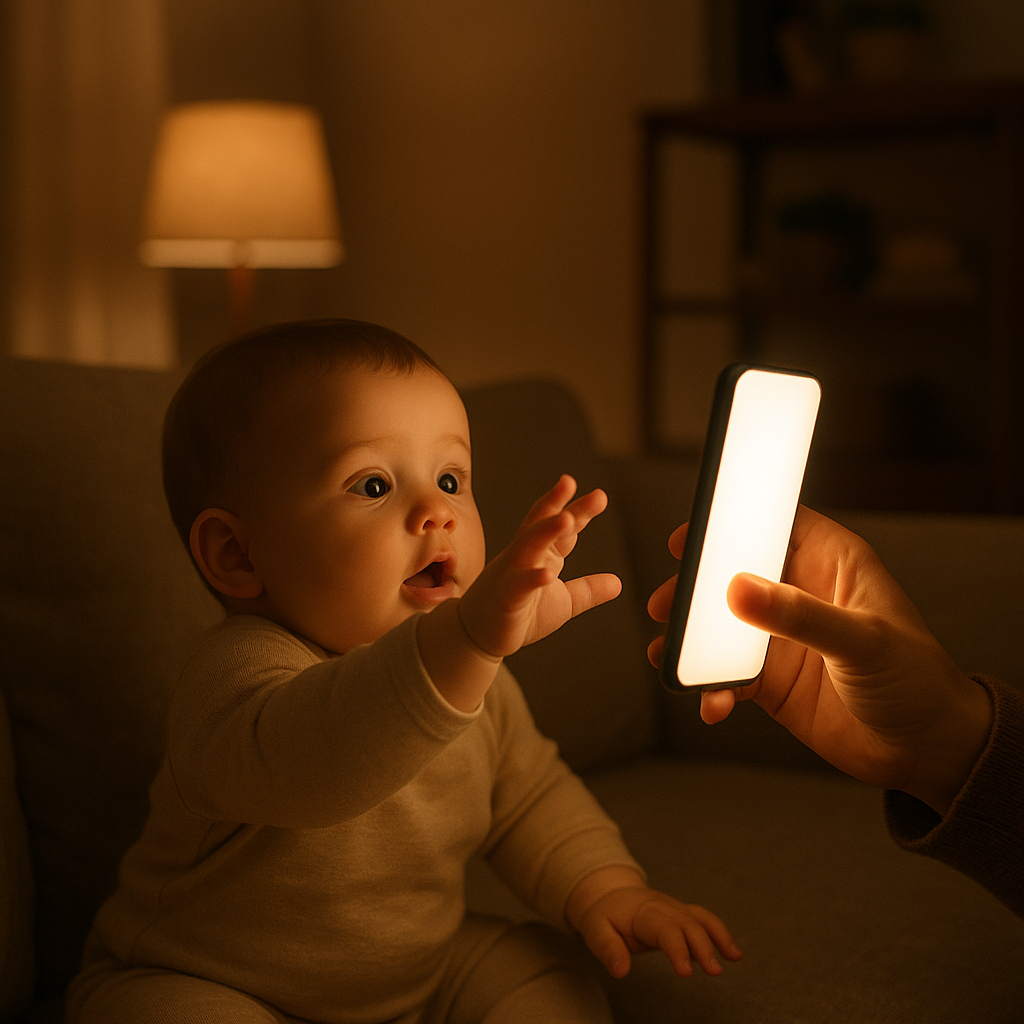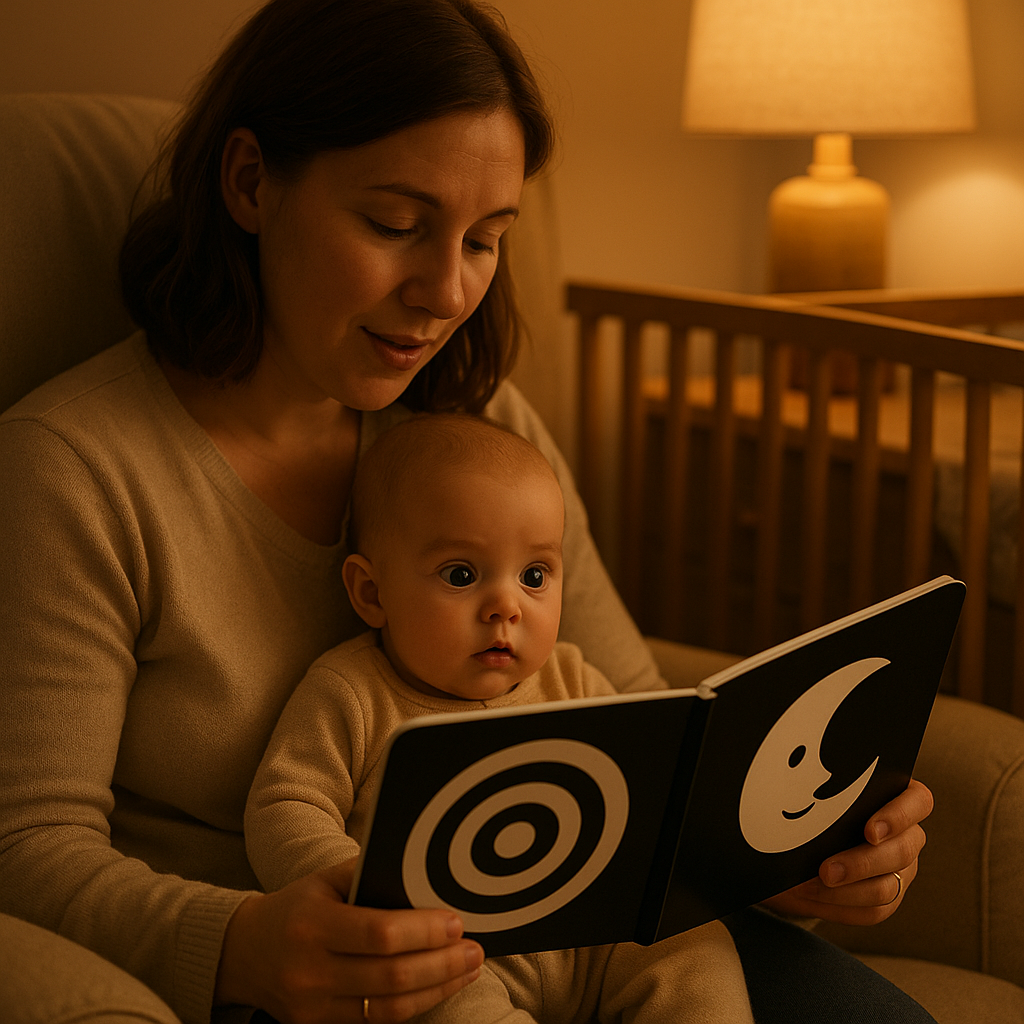In today’s digital age, many parents worry about how screen time affects their baby’s ability to talk. With smartphones, tablets, and TVs ever-present, it’s natural to question their impact on language development. Research suggests that excessive screen time may increase the risk of speech delays, but mindful limits and interactive alternatives can help your child thrive. This article explores the evidence, answers common questions, and offers practical tips to support your baby’s budding language skills.
- Is there solid evidence that screen time causes speech delay in babies?
- How much screen time is actually safe for babies—and does content matter?
- What critical gaps do headlines miss about screens and speech delay?
- Your Top Questions, Answered
- What daily habits can replace screens and turbo-charge your baby’s language?
- Final Thoughts
Is there solid evidence that screen time causes speech delay in babies?
Recent research highlights a link between excessive screen time and speech delays in young children. A 2020 study found that increased handheld screen time at 18 months is associated with delays in expressive language, where children struggle to form words. See Mobile Media Device Use is Associated with Expressive Language Delay in 18-Month-Old Children. Another 2024 study showed that toddlers with over 2 hours of daily screen exposure before age 2 have slower language development, with higher risks of delays. Discover how Mobile device screen time is associated with poorer language development among toddlers. A 2023 study confirmed that screen time at age 1 is linked to communication delays at ages 2 and 4, with children exposed to 4+ hours daily facing a nearly five-fold risk by age 2. Read more on Screen Time at Age 1 Year and Communication and Problem-Solving Developmental Delay at 2 and 4 Years.
Why does this happen? Screens reduce “serve-and-return” interactions—the back-and-forth exchanges that build language skills. A 2024 study using LENA recorders found that each minute of screen time at 36 months cuts 6.6 adult words, 4.9 child vocalizations, and 1.1 conversational turns, equating to 194 fewer conversational turns daily for an average of 172 minutes of screen time. Understand screen time’s effect on parent-child talk. Multilingual homes may support language development through richer interactions, like labeling and repetition, though direct evidence linking this to screen time effects is limited.

How much screen time is actually safe for babies—and does content matter?
The American Academy of Pediatrics (AAP) provides clear guidelines for screen time to support healthy language development:
- Under 18 months: Avoid screen time, except for video chats with family.
- 18–24 months: Introduce brief, high-quality educational shows (e.g., Sesame Street), only when co-viewed with a parent.
- Ages 2–5: Limit non-educational screen time to 1 hour per day, with co-viewing and discussion to enhance learning.
Content and context matter significantly:
- Slow-paced, educational programs (e.g., “Sesame Street”) are less harmful than fast-paced cartoons.
- Co-viewing turns screen time into a conversation starter, unlike solo viewing.
- Parental screen use influences children; when adults spend over 2 hours on phones, toddlers’ screen time often increases.
Instead of screens, try reading books like Goodnight Moon. One picture book delivers more real words than an hour of children’s TV, boosting vocabulary effectively.
Need a richer substitute? Try nightly pages from Reading to Your Baby—one picture book delivers more real words than an hour of children’s TV.
What critical gaps do headlines miss about screens and speech delay?
Headlines often highlight screen time risks but overlook key nuances that parents need to know:
- Reversibility: Reducing screen time can help toddlers catch up on speech. A 2021 study found that cutting screen exposure and increasing talk, play, or reading for several months improved language skills in many toddlers with delays.
- Type of App: “Tap-to-learn” apps may build fine motor skills but still reduce verbal interactions unless parents narrate actions aloud. Interactive apps don’t boost language unless paired with adult talk.
- Background Media: TVs on in the background, even muted, disrupt parent-child conversations. It reduces verbal interactions, limiting language exposure Create screen-free zones—like the kitchen, playmats, or car seat—to encourage chatter.
- Access Equity: Families in crowded or unsafe neighborhoods may rely on screens more due to limited safe play spaces. Free community resources, like library story hours, offer language-rich alternatives.
See Interactive Storytime offer low-cost language boosts.
Your Top Questions, Answered
-
Can occasional screens hurt?
Short, rare sessions under 15 minutes carry little risk if you pack the rest of the day with rich talk, play, and books. -
Are video chats okay?
Yes. Because they involve real-time, two-way interaction, video calls support vocabulary and social cues. -
What red flags signal a possible speech delay?
No babbling by 9 months or no clear words by 15 months warrant attention. Track milestones with Baby Language Milestones. -
When should I seek professional help?
If milestones lag and your child averages over 2 hours of daily screen time, consult a pediatrician or speech-language pathologist now. Early therapy can double recovery speed. -
Does bilingual exposure confuse babies?
No. Research shows bilingual—and even trilingual—settings may protect against screen-related delays. Learn more in Raising a Bilingual Baby.
What daily habits can replace screens and turbo-charge your baby’s language?
Replacing screen time with interactive activities can significantly enhance your baby’s language skills by fostering “serve-and-return” interactions. A 2024 study found that screen time reduces verbal exchanges, with 172 minutes daily cutting 194 conversational turns. Understand screen time’s effect on parent-child talk. Swap one screen habit at a time for these language-rich alternatives:
- Phone scrolling during diaper changes → Use lively Parentese—exaggerated, melodic speech—to narrate wipes and giggles.
- Tablet while you cook → Give your baby a sensory bin with safe items like measuring cups; label textures (e.g., “smooth”) and colors (e.g., “red”). Sensory play encourages verbal interaction.
- Background cartoons → Play a playlist of family songs like “Twinkle, Twinkle, Little Star” and clap along to engage rhythm and words. Music supports language development.
- Post-nap TV → Take a 5-minute “cloud hunt” walk, naming shapes or objects (e.g., “fluffy cloud”). Outdoor play enhances descriptive language.
- Evening videos → Read a board book like The Very Hungry Caterpillar, pointing to pictures and pausing for your baby’s sounds. Shared reading builds vocabulary faster than screen time.

For more structure, try the morning-song / bedtime-story bookends outlined in When to Start Reading to Your Baby. Even busy days can squeeze in these micro-chats.
Final Thoughts
Excessive, passive screen time crowds out the talking, playing, and reading that craft your baby’s voice. By setting mindful limits, choosing quality content, and flooding each day with face-to-face interaction, you can neutralize—and often reverse—the risks. Ready for the next step? Download our 7-Day Screen-Light Language Plan and visit How Talking to Your Baby Boosts Language and Brain Skills to keep momentum rolling. Your consistent conversation today plants the seeds for confident communication tomorrow.